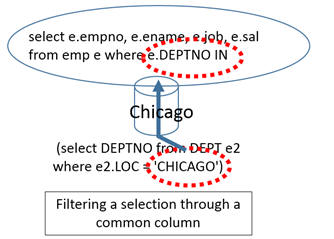select e.empno, e.ename, e.job, e.sal from emp e where e.DEPTNO IN (select DEPTNO from DEPT e2 where e2.LOC = 'CHICAGO')
select e.empno, e.ename, e.job, e.deptno from emp e where e.DEPTNO IN ( 10, 30)
select e.empno, e.ename, e.job, e.deptno from emp e where e.DEPTNO IN ( 10,(select DEPTNO from DEPT e2 where e2.LOC = 'CHICAGO'))
NATURAL JOINS
SELECT ENAME, JOB , DEPTNO, LOC FROM EMP NATURAL JOIN DEPT WHERE DEPTNO = 30 AND DEPTNO = 10
SELECT ENAME, JOB , DEPTNO, LOC FROM EMP NATURAL JOIN DEPT WHERE DEPTNO = 30 OR DEPTNO =10
The joins provides wide selection of columns from two tables, whereas the sub-queries impose filtering-logistics / restrictions on the columns from the second table.

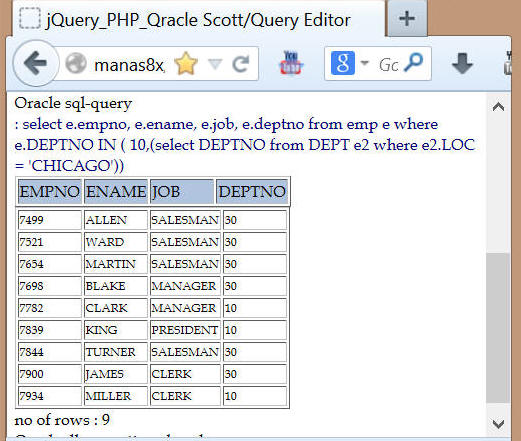
NATURAL JOIN:


SUBQUERY
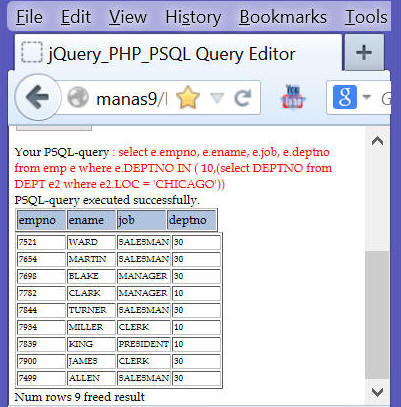
NATURAL JOIN
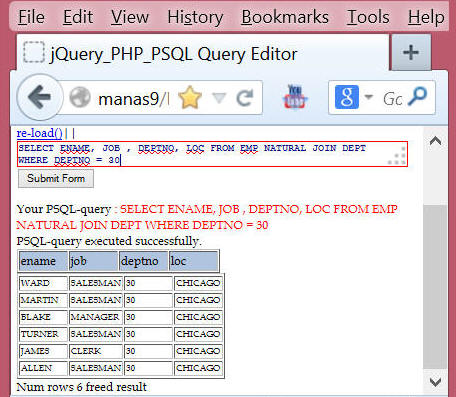

SUB QUERY
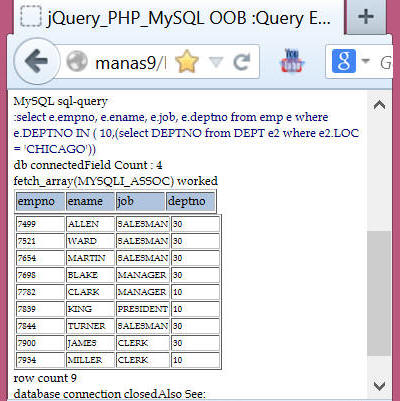
NATURAL JOIN

